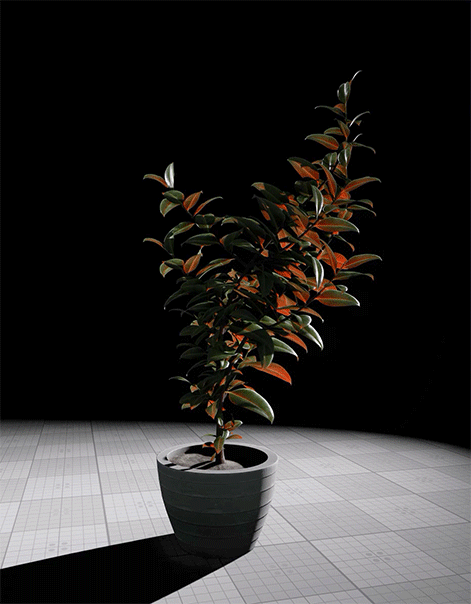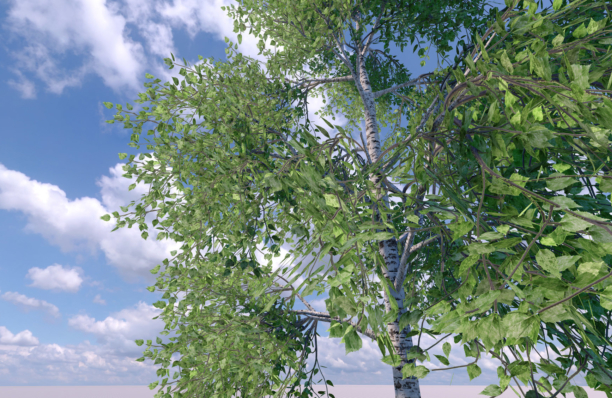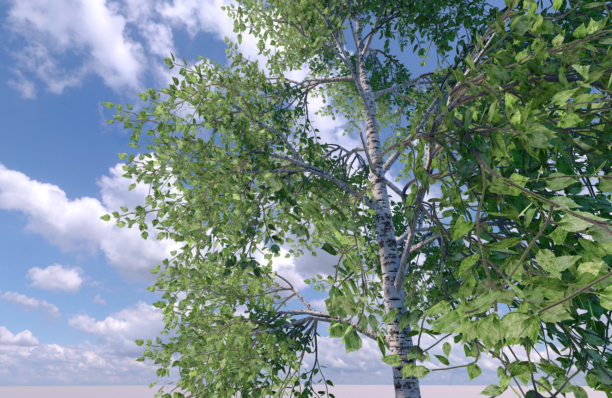Explore New Vegetation Features in UNIGINE 2.8
Vegetation plays a huge role in different scenarios: outdoor scenes, architectural visualization, and even aircraft simulations. In UNIGINE 2.8, we introduced a number of improvements to our greenery look more immersive and convincing. Here we’d like to share our progress on the visual quality of vegetation objects: trees, bushes, grass, etc. Check the video preview from the upcoming demo and see a short breakdown of the latest features!
Better Impostors with Depth Texture
We made a noticeable visual improvement for impostors by adding depth texture support into the material. The updated material makes a simplified image of a tree or any other object almost identical to the original high-poly model. This gives wider optimization options since you can keep “fake” trees at a closer range at a little cost.
The new feature is also a good time-saver. Depth texture is grabbed automatically by our Impostor Creator Tool and the very first result will not require routine tuning, compared to the previous SDK versions.


Depth texture off, Impostors look flat and require additional material tuning to get rid of shadows artifacts
The same scene. Depth texture on, Impostors right after the grabbing process
Updated Subsurface Scattering (SSS) for Leaves and Grass
Few experiments we ran with our subsurface scattering algorithm resulted in better rendering of leaves and grass.
- Updated SSS changes the backside color of leaves and grass giving them a genuine and realistic look. No content modification required!
- Now shadows can dissolve in translucent objects. The degree of dissolving can be configured with the translucency parameter in the material. Actually, this effect can be applied to almost any object in the scene, not only foliage.
- Screen Space Shadows and Subsurface scattering combined give a significant improvement to the final look of a tree.


Leaves in 2.7.3
Leaves in 2.8 with Screen Space Shadows and Subsurface Scattering enabled
Another new feature that greatly contributes to the greenery look is translucent objects color. It can be any color you want, but yellowish colors usually go better with leaves.

Natural Tree Topology with Angle Fade and Rotate Normals Options
Angle Fade can be enabled in standard material. With this option, all polys rotated away from the camera will be automatically hidden. It helps to mask the artificial look of a model.
Rotate Normals to the Camera serves the same purpose. It covers up polygons and contributes to more realistic visuals.


Without Angle Fade, some polygons tell us that the tree is artificial
Angle Fade automatically clips branches and results in a more convincing picture


Rotate Normals disabled
Rotate Normals enabled
Improved Anti-Aliasing
We also improved the TAA algorithm: now it takes into account diagonally neighboring pixels in the process of color clamping. This results in a better visual for thin objects such as grass blades.
All the mentioned features are already available. Get a free 30-days trial and start creating your amazing project with lifelike vegetation.